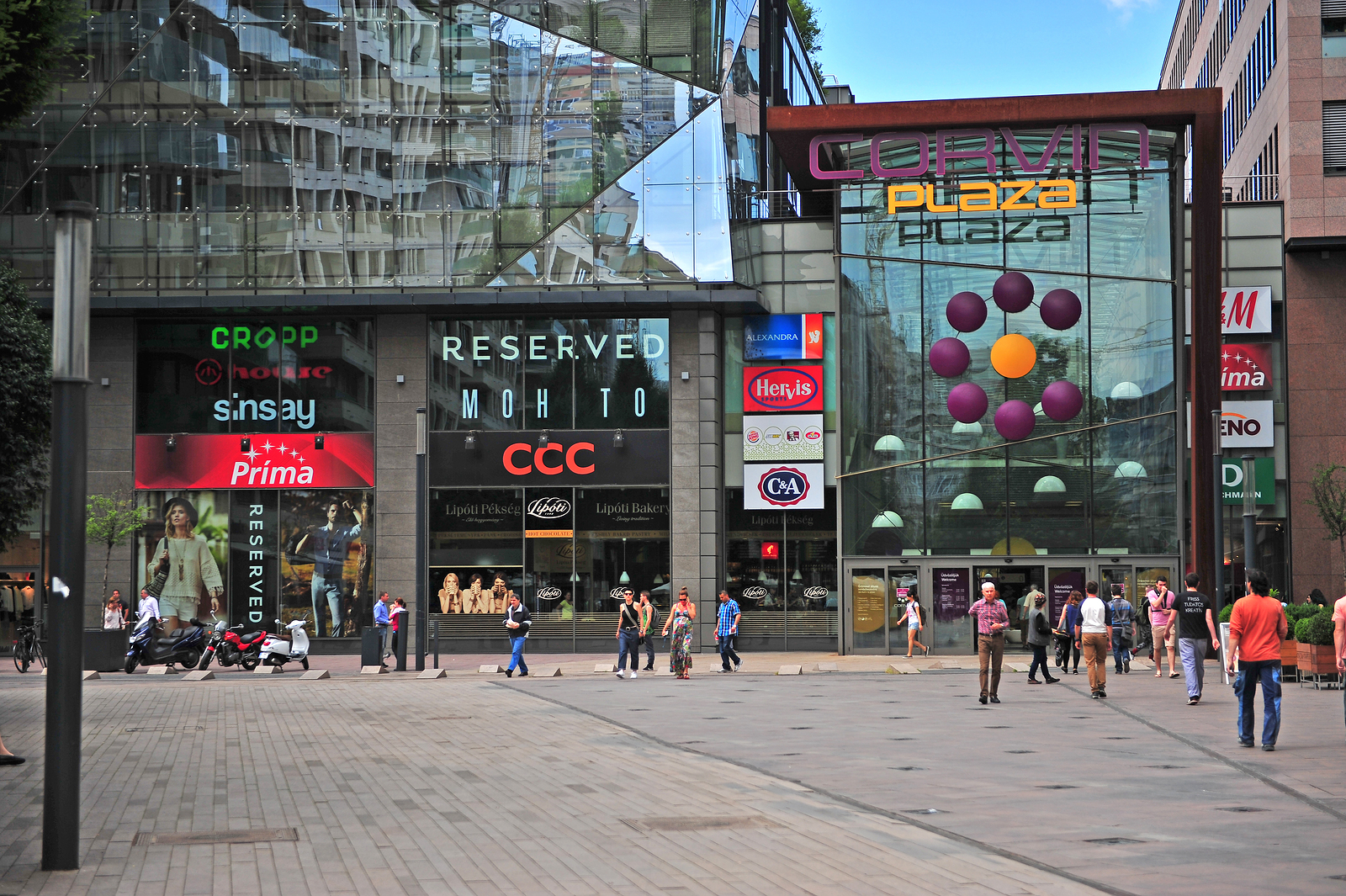“The largest threat to the traditional retail sector continues to be the growth of online sales and this is expected to continue to grow in CEE,” Neil Lipscomb, JLL European retail capital markets, tells Emerging Europe.
And yet online stores are not threatening the industry as much as initially thought. Shopping centres need only to adapt, offering the same convenience and range as customers expect to find online, but with a level of experience and humanity that can’t be found on websites or apps.
“Retail needs to offer experience or convenience to differentiate itself from online sales. Large, dominant malls or local convenience shopping can fulfil these requirements but mid-sized malls ranked second or third in smaller cities are likely to lose relevance to shoppers and face difficult times ahead,” adds Mr Lipscomb.
“Retail is undoubtedly going through a challenging transition, with discerning customers and many strong contenders across Europe,” says Marek Piechocki, president of LPP.
“Brands are adapting to this change through differentiation: making sure their designs and brand identities stand out and offer something new – such as our Reserved ReDesign collection, which offers shoppers a modern, style-conscious take on the Eastern European aesthetic,” he tells Emerging Europe.
Promising numbers
According to the German market research company GFK, Central and Eastern Europe remains a key market for the retail sector, thanks to continuing increases in revenue and tight labour markets, which are reviving investments in the euro area, the predominant trading region for CEE countries.
“Retail growth rates in CEE are still substantially above Western European levels and prime rents in shopping centres are growing. Nevertheless, professional owners are constantly improving the quality of their shopping centres. They are setting the bar when it comes to consumer, retailer and investor expectations,” said Walter Wölfler, head of retail Austria and CEE at the real estate company CBRE.
With record low interest rates, we expect the current cycle to set new yields in the core CEE markets of Poland, Czech, Hungary, Slovakia and Romania. The limited availability of stock, and the fact that a significant proportion of major centres have already traded this cycle will further drive yields. The continued low interest environment will keep investors tuned into our sector,” added Anthony Selman, CBRE’s head of CEE investment.
Poland is still the region’s leader with five billion euros traded in the retail sector, offices, warehouses and hotels in 2017 and already three billion euros traded in 2018. The Czech Republic continues to be a key target destination for both international and domestic capital. In fact, in the first half of 2018, domestic capital has registered a 67 per cent share of the total investment volume.
“In CEE the key players in the market in terms of investment purchases of shopping centres over the last few years have been South African backed investors, led by Nepi/Rockcastle, who have purchased Krakowianka, Krakow, Arena Centre and Mamut in Budapest and Redefine/EPP,” Mr Lipscomb says.
“Of the German open-ended funds Union Investment has been a consistent buyer of core assets, most recently purchasing Magnolia in Wroclaw. CBREGI are consistent traders in the region, most recently acquiring Letnany in Prague. A notable new trend has been the emergence of domestic Czech Republic investors seeking to broaden their reach outside of their domestic markets, led by CPI,” he continues.
Driving real estate growth
While the growth continues, limited availability is starting to slow down the construction of malls, as most CEE cities have reached capacity.
“In Poland for instance only half of the stock planned for completion in 2019 is now under construction and we expect new mall deliveries in 2018-19 to represent some of the lowest levels of the past 18 years,” Mr Lipscomb adds.
Polish retailer LPP still views bricks-and-mortar as crucial both for the company and for the whole retail sector.
“Retail continues to drive real estate growth due to the continued need for recognisable physical touch points for customers, as well as hubs for goods distribution,” says Marek Piechocki. “LPP is a growing company with global ambitions and to realise these we must make strategic investments in real estate. Next year, we’ll open our first stores in Finland and Bosnia and Herzegovina, and by the end of 2019 we aim to have a physical presence in 25 countries, in addition to an e-commerce presence in 35 countries.”
The Polish real estate investment company EPP agrees, adding that the industry has to adapt to survive.
“Retail remains a very attractive sector but it is evolving. Today, it is much more about extending existing shopping centres, in order to offer more diversity to clients, with the consequence that big shopping centres are getting bigger and non-dominant ones are struggling,” Hadley Dean, CEO of EPP tells Emerging Europe.
“Now it is all about being able to defend your position in your catchment and having dominant but sustainable shopping centres. In Poland over 70 per cent of the retail spend is in malls. People go there not only to shop but to live the experience, meaning shopping centre owners need to compete for peoples time and money,” he says.

Challenges
Although e-commerce might not represent a threat, customers do. Client behaviour has changed, as have physical spaces. The amount of choice people enjoy today has led to a waning of brand loyalty, with customers switching between retailers from purchase to purchase, depending which best serves their needs at the time, forcing retailers to find new and innovative ways to appeal to buyers.
“Retail must follow the digitalisation process. There is no other possibility because mobile technology, information technology, automatisation, robotisation are happening. We have to use technology because a lack of workers will affect efficiency,” said Marta Nováková, president of the Czech Confederation of Commerce and Tourism.
“I think that bricks and mortar stores will continue to exist as a place for meeting, as a place for fun, as a place for entertainment as well as a place for buying goods.”
The ability to analyse and disseminate information has already been an important factor for retailers, and its importance is expected to continue to grow. As retailers become experience providers, they are expected to increasingly emphasise the use of digital mobile technology for providing information on products and services in order to deliver value to customers.
The new face of retail
JLL has come up with six new dimensions of the retail experience: intuitive, human, accessible, meaningful, immersive and personalised. The retailer makes a difference in the lives of shoppers, who feel a sense of pride when shopping. The experience is how shoppers want it, with staff who understand their unique needs, offering recommendations based on past behaviour and rewards based on loyalty.
“The clear winners in terms of physical retail space will be the large dominant shopping centres which can provide the best choice of retail food and leisure offer and good transportation links,” JLL’s Mr Lipscomb explains.
“Mall owners will need to continue to innovate in their centres in order to keep them relevant in a fast-changing retail environment. The best malls will need to offer a high quality environment but also a dynamic and diversified retail offer; through mall activity and pop-up shops. It seems online retailers still need to make improvements to their delivery processes with large volumes of returned items adding significantly to their cost base.”
Click and collect locations seem to be a winning concept, outside of the pure-play online retailers.
“Approximately fifty per cent of online sales in Poland are done via click and collect. There are no high streets in Poland, so we have to offer the experience that only a shopping centre can offer, by making them work more like community centres,” says EPP’s Mr Dean.
“The click and collect concept works because the average online spending in Poland is still low compared to western Europe, whilst delivery prices are high. Shopping centres offer a different experience, now they are the public space of the city, working as tourist destinations as well.”
Going beyond the experience means also knowing a customer’s needs wherever they might live. Mr Dean believes that any successful foreign retailer who wants to invest abroad must adapt to local needs.
LPP is trying to consistently improve the shopper experience, investing over 12.6 million US dollars in new technology annually, aimed at enriching the customer experience across its markets.
“In the world of contemporary retail, and particularly for fashion retail, this is a must-have. In the past 20 years LPP has turned a single shop, opened in 1998, into over one million square metres of retail space spanning Western, Central and Eastern Europe and the Middle East. During this time, retail has advanced rapidly and it’s hard to predict what the future might look like,” conludes LPP’s Mr Piechocki.






Add Comment